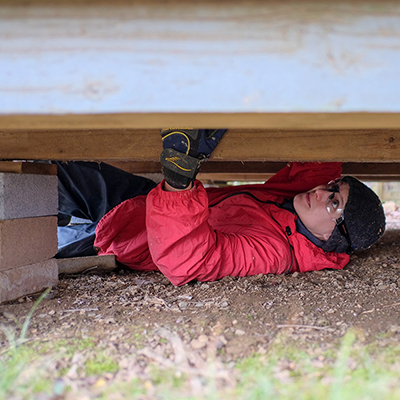All About Insulation R-Values

Published May 19, 2025
R-values rate how well building insulation can prevent the flow of heat into and out of the home. Higher ratings mean greater insulation performance and thus more savings on your next heating and cooling bill. This guide will teach you what you need to know about insulation R-values so you can better insulate your home.
Table of Contents
What Is Insulation R-Value?
R-Value U.S. Map
R-Value Insulation Chart
Achieving Greater R-Values in Attics
Achieving Greater R-Values in Exterior Walls
Other Areas to Insulate
What Is Insulation R-Value?

Insulation ratings are measured in R-values per inch of thickness. An R-value tells you how well a type of insulation can keep heat from leaving or entering your home. R-value insulation ratings vary based on the type, thickness and density of the insulation material. Typically, a higher R-value means better climate control and better energy efficiency for your home. It
usually means a higher price point as well.
For every type and material of insulation, check the R-value per inch of thickness that the manufacturer has listed.
In general, the insulation’s method of installation can give you an idea of how it compares to other types of insulation.
Here are the installation methods from lowest to highest average R-value per inch:
- Blown-in (or loose-fill) insulation
- Insulation blankets (batts and rolls)
- Spray foam insulation
- Foam board insulation
Note that the material the insulation is made from will change the R-value as well.
Tip: Radiant barriers and vapor barriers are not rated by R-values.
R-Value U.S. Map

Your home doesn’t necessarily need the highest R-value insulation. The R-value your insulation needs depends on your local climate.
The map above shows each region of the U.S. and the Department of Energy’s corresponding climate zone. Once you find your home’s zone on this map, you can use the below R-value insulation chart to determine the minimum R-value your insulation should have.
R-Value Insulation Chart

Find your zone on the map and then use the above insulation R-value chart to determine the level of insulation you need to properly insulate your attic, walls, floors and crawlspaces. These R-values are a sum, meaning this should be the total R-value once you add up the entire depth of insulation. For example, if you have a type of insulation that has an R-value of R-5 per inch of thickness, you will need a depth of 6-inches of this insulation installed in your attic to reach R-30 if you live in Zones 2 or 3.
Note from this chart that the ideal R-value differs for each part of your home. The ideal attic insulation R-value is different than the ideal wall R-value insulation. Make sure your home is properly insulated in all these locations.
Achieving Greater R-Values in Attics

Insulation ratings can be improved by adding more layers of insulation. You can mix the type and material of insulation too. For example, if your attic already has fiberglass insulation blankets installed, you can improve its R-value by installing blown-in cellulose insulation on top of the blankets. The R-values of both insulations will accumulate. You can achieve better thermal performance in your attic by adding an additional layer of insulation.
Achieving Greater R-Values in Exterior Walls

As with attics or anywhere else in your home, adding more layers of insulation to your exterior walls is key to having a higher R-value and better thermal performance. Foam board insulation is easy to install between wall studs and over existing blanket insulation.
Spray foam insulation, however, behaves a little differently than other types of insulation. It’s great for sealing gaps around windows and doors because it creates an air seal. Adding more layers won’t increase its performance. Instead, you need to be sure an air seal is created. Spray foam insulation R-value varies, based on manufacturers, which product you choose factors unique to the type of foam. Spray foam insulation R-value is lower for the lighter, open cell foams compared to the denser, closed cell foams. But the R-value can decrease as the foam ages and breaks down, or if the foam gets moisture in its pores.
Other Areas to Insulate

In addition to attics and exterior walls, you can get greater R-values for your home by remembering to insulate these areas as well:
- Crawlspaces: Next to attics and exterior walls, crawlspaces and basements have the most potential for heat transfer. Be sure that these areas are also adequately insulated.
- Garage: Better temperature control in your garage means you can safely store more items and protect
your car from overly hot or cold temperatures. Garage insulation is easy to install yourself. - Water heater and water pipes: Adding insulation to your water heater can reduce standby heat losses by 25- to 45-percent, which in turn reduces your energy bills. Wrapping hot water pipes in tubular insulation will also help reduce loss in water heat.
- Ceiling: Enjoy better floor-to-floor climate control in your home by installing ceiling insulation.
Now that you understand insulation R-values, you can make sure your home is properly insulated. If you don’t have all the tools you need to install insulation and improve your insulation R ratings yourself, consider The Home Depot's tool rental services.



































